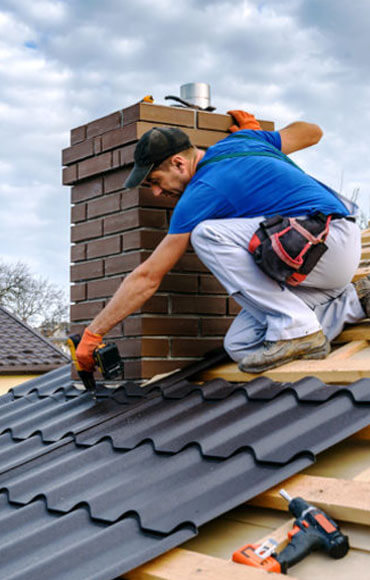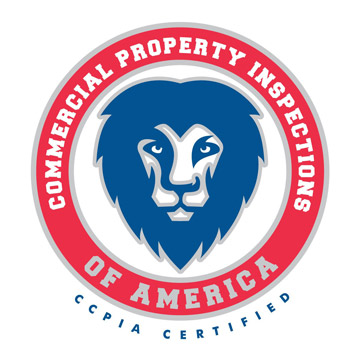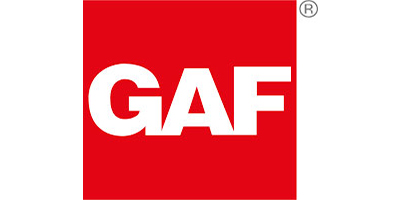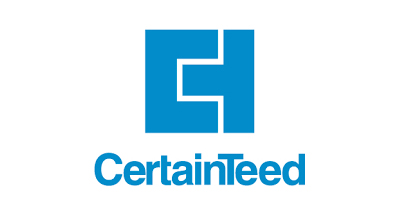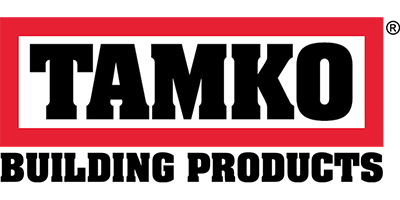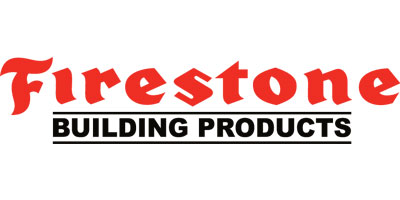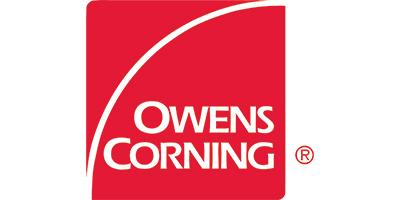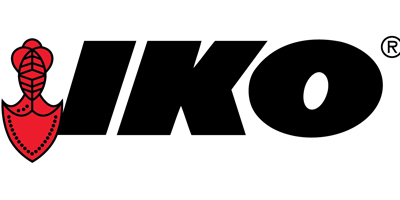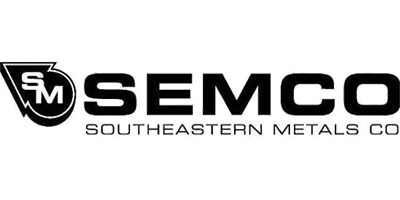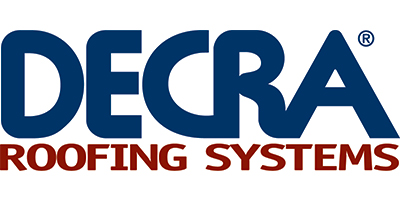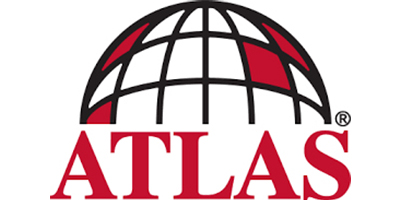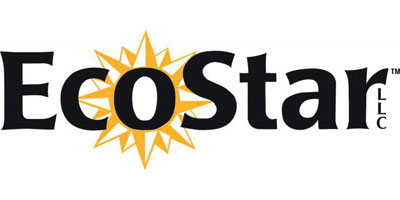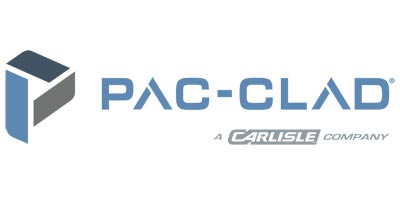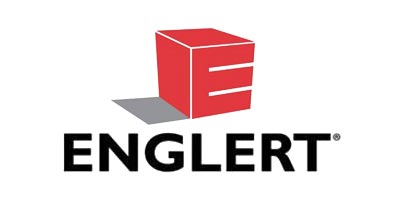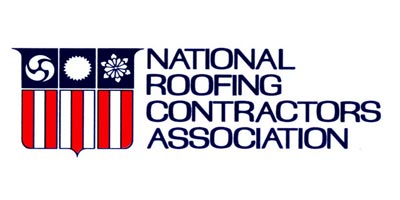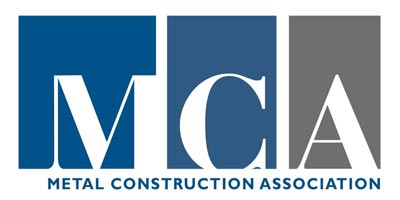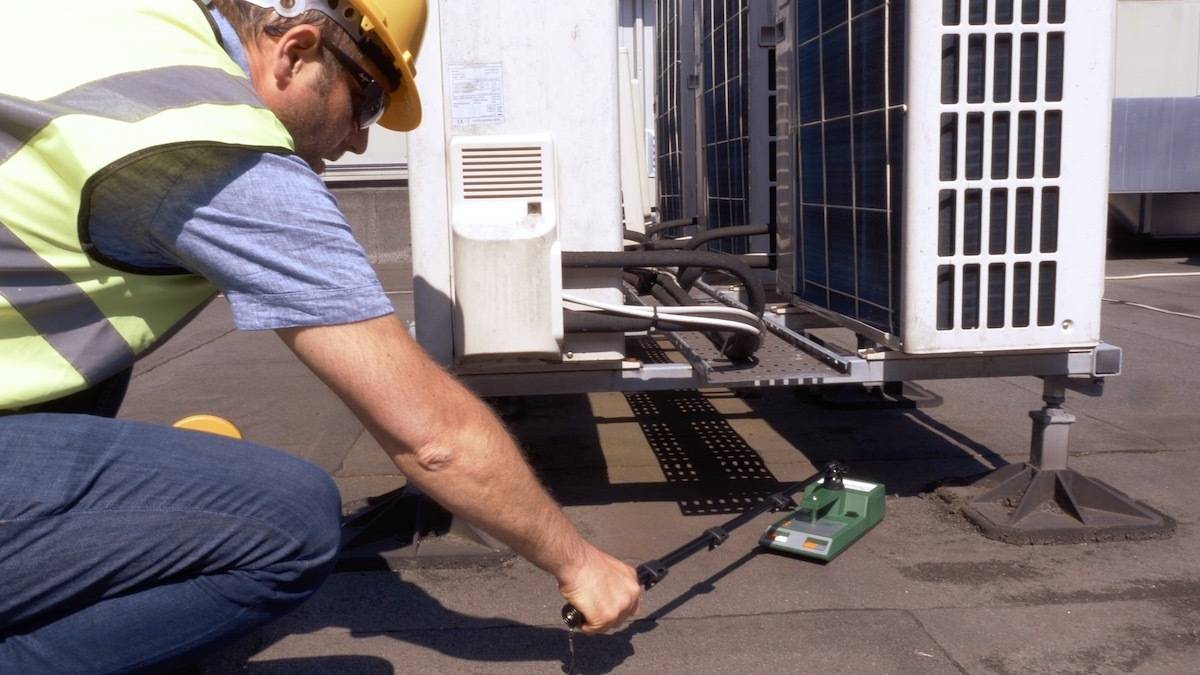
Commercial Roof Inspection Washington DC & Virginia
A consistent commercial roof inspection program can help you extend your commercial roof life expectancy. In addition, it will reduce the need for emergency repairs. It is critical to an overall building preventive maintenance program to regularly inspect and maintain roof surfaces, drains and downspouts. But, what should happen during a commercial roof inspection? Read below for a full explanation of what a professional commercial roof inspection should consist of.

Roof Leaks

Punctures

Open Seams

Hail Damage

Ridging & Splitting

Shrinkage

Weathering

Blow Offs & Billowing
What Should Be Included In A Commercial Roof Inspection Report?

Commercial Roof Inspection Essentials 101
There are many roofing companies offering so-called "free commercial roof inspections". These free commercial roof inspections generally consist of a poorly trained roof inspector walking your commercial roof, performing a cursory visual inspection, and then writing up an inspection report. While using this approach may find some roof issues, the human eye is limited in what it can detect. A visual commercial roof inspection cannot see water or moisture that has begun to leak into the roof substrate. At GoTech Roofing our commercial roof inspectors are trained to use multiple inspection methodologies to detect what the human eye cannot possibly see. These methodologies include utilizing Tramex moisture detection equipment and probes, infrared/thermal imaging cameras and drones, and performing roof core sample analysis. Below we will fully discuss what a professional commercial roof inspection should consist of.
Table of Contents
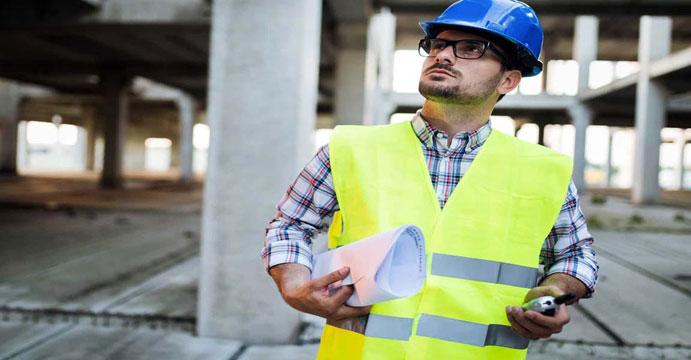
Visual Inspection
1. Interior Inspection of the Commercial Building
A commercial roof inspection starts with a thorough inspection of the following interior commercial building components:
- Check that the roof-penetrating components have supplemental framing.
- Check that the roof appears to be structurally sound (no deflections, rotting, openings, etc.).
-
Check for moisture intrusion (water stains, corrosion, rust, liquid moisture, paint deterioration, etc.).
- Ceiling
- Interior walls
- Underside of roof deck
- Around roof penetrations
- Check for past repairs.
2. Exterior Inspection of the Commercial Building
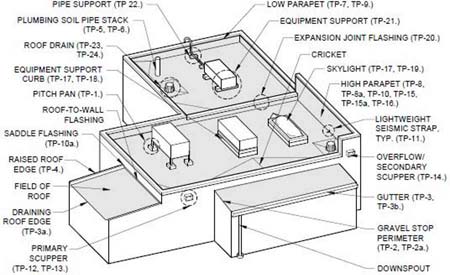
Next the commerical roof inspector thoroughly inspects of the following exterior building components:
- Check that scuppers, gutters, and downspouts are attached to the building.
- Check all edge metal for rust, deterioration, and any potential entry point for moisture.
- Check for missing, damaged, or disengaged flashing.
- Check that the counter-flashing or coping is sloped to shed water.
- Check for leaks (water stains, corrosion, rust, liquid moisture, paint deterioration, etc.).
3. Low-Slope Roof Membrane Inspection
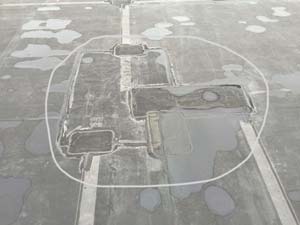
The commerical roof membrane is where the inspector will spend the most time. The commerical roof inspector will inspect the roof membrane for the following potential issues:
- Check for blistering.
- Check for punctures and impact damage (caused by foot traffic, tools or other mechanical damage, hail, falling tree limbs, etc.).
- Check for active ponding and ponding stains.
- Check for loose seams and fish mouths.
- Check for alligatoring, splitting, and cracking.
- Check for ridging (mole runs and picture-framing).
- Check for wrinkling across the membrane.
- Check for defective lap seams (fish mouths or unsealed areas).
- Check for chemical damage (fats, oils, grease, etc.).
- Check for microbial growth
- Check missing fasteners.
- Check that the membrane is properly secured.
- Check for membrane and substrate firmness (moisture damage, insulation collapse, chemical degradation, etc.).
- Check for debris and random vegetation.
- Check for wind scouring or other bare spots at ballast.
- Check for shrinkage around the roof’s perimeter (tenting, excessive stretching, loose flashing, etc.).
- Check for past repairs.
4. Expansion Joints and Area Dividers
Next, the commercial roof inspector will check your roof expansion joints and area dividers.
- Check for signs of excessive movement (cracks, splits, gaps, etc.).
- Check for defective or damaged seams.
- Check for defective or damaged flashing.
- Check for past repairs.
5. Roof Penetrations and Horizontal Terminations Inspection
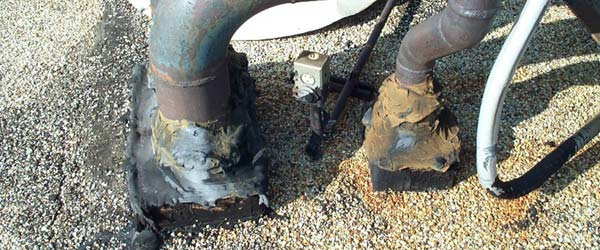
Commercial flat roofs will have multiple penetrations including electrical, plumbing and roof venting, HVAC, and skylights. Termination bars are used anywhere the flat roof membrane ends against a wall or a raised curb. These are areas where a majority of leaks occur.
- Check for loose, degraded, or damaged flashing.
- Check for adequate structural support.
- Check for adequate sealant in pitch pan.
- Check for alligatoring, splitting, and cracking at flashing.
- Check for signs of leaks at flashing (water stains, corrosion, rust, liquid moisture, paint deterioration, etc.).
- Check for defective collars and boots.
- Check for adequate mounting methods (curbs, stands, metal sheets, etc.).
- Check that flashing is compatible with roof membrane and surfacing materials.
- Check that penetrations do not block the flow of water.
- Check that penetrations do not cut into standing seams.
- Check that crickets are on the upside.
- Check for past repairs.
6. Roof Perimeter Flashing and Vertical Terminations
The commercial roof inspector will inspect Roof Perimeter Flashing and Vertical Terminations for the following:
- Check for blistering.
- Check for active ponding and ponding stains.
- Check for alligatoring, splitting, and cracking.
- Check for loose or missing fasteners.
- Check for movement of base and counter-flashing (gaps, splitting, tenting, loose elements, etc.).
- Check for signs of leakage directly through or around flashing.
- Check for damaged, disengaged, or missing base or counter-flashing.
- Check for past repairs.
7. Drainage

Unlike steep sloped roofs, commercial flat roofs need a built-in drainage system to help remove rain water and debris. Even though they are called flat roofs, there is always a little slope built in to the low-slope roof to drain water either to the edge gutters, or to roof drains. Inadequate or clogged drainage can lead to serious issues with a commercial flat roof, resulting in leaks - or a worse case, structural damage. Unfortunately, many commercial low-slope roofs are installed with improper slope. The commercial roof inspector will check the following drainage components:
- Check for leaks.
- Check clogged drains, strainers, scuppers, and gutters.
- Check for obstructions to drains, scuppers, and gutters.
- Check for a missing or loose internal drain strainer.
- Check for active ponding and ponding stains.
- Check for dead-level roof.
- Check for lack of internal drain sumps or basins.
- Check for scupper and gutter metal deformities (freezing and thawing, ice damming, weathering, etc.).
- Check for past repairs.
Moisture Meter Inspection
Flat Roof Membrane Moisture Meter
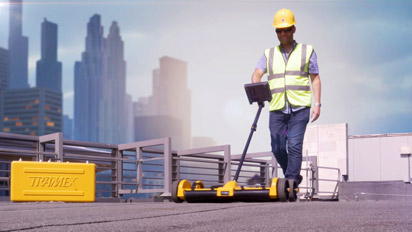

The Tramex Dec Scanner and Roof & Wall Scanner are designed to evaluate the moisture condition of an entire flat roof area to ASTM D7954 standards quickly & non-destructively. These precise instruments are used for detecting and tracing the source of a leak, as well as locating and moisture-mapping damaged PolyISO insulation and flat roofing membrane materials. These Tramex Roof Moisture Inspection Tools are not only for assessment of possible moisture problems, but can also be used to perform a water tight integrity test on a newly installed roofing system.
Moisture Detector Meter with Non-Destructive Pin Probes

The Tramex CMEX5 moisture meter can check moisture content in PolyISO insulation with Tramex electrodes. In addition, it can measure ambient conditions in roof cavity spaces and structures using the Tramex relative humidity probes.
Thermal - Infrared Commercial Roof Inspection
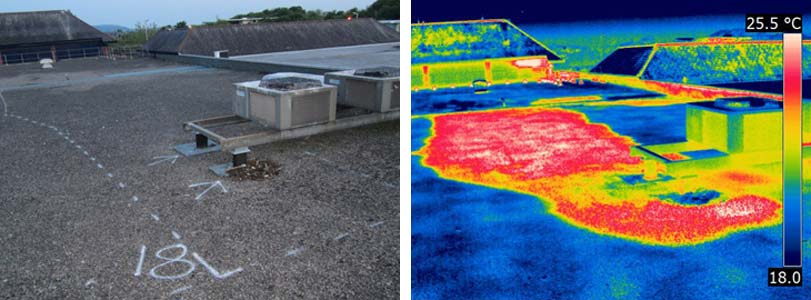
More effective and more efficient than any other commercial roof inspection procedure, infrared scanning (oftentimes called thermal imaging) by a certified commercial roof inspector detects moisture and identifies where it has penetrated into a roof system long before it breaks through and drips onto occupants below. The commercial roof inspector can use a handheld infrared / thermal imaging camera or infrared / thermal imaging drone. Typically the inspector will use a infrared / thermal imaging drone with very large commerial roofs because the drone will image moisture intrusion for the entire roof area at one time.
Normally within a flat roof assembly there is little or no water. When a roof leak develops, water enters the roof assembly and, depending on the type of the insulation system used, is either absorbed by the insulation or runs into the gaps between the nonabsorbent insulation. Unfortunately, when water enters a commercial flat roof assembly it is there for a long time, sometimes the life of the flat roof.
What Does An Infrared / Thermal Roof Image Show?
The physical property of a material's ability to store heat is called thermal capacitance. The materials in commercial low-slope roof assemblies have comparatively low thermal capacitance, especially when compared to water. To raise water temperature requires a lot of energy and likewise water must release a lot of energy to cool.
The physics used for commercial infrared / thermal roof inspections is that dry roof insulation heats up and cools down faster than wet roof insulation. Infrared / thermal inspection goes beyond simply finding a roof leak by locating the leak area and the amount of the moisture invasion of the insulation.
To do this we require a sunny day and solar heating of the flat roof assembly. The commercial roof inspector will arrive at night, typically right after the sun goes down. This is when the flat roof assembly surface begins to cool. Since the dry roof insulation cools faster than wet roof insulation the saturated areas will still be warm and they will appear on an infrared / thermal imaging device as a reddish color and the cooler areas will be blue to purple-ish. A commercial roofing inspector will use highlighter paint to mark off the areas where there is moisture saturation so that the commercial roofing contractor knows where to repair the low-slope roof.
Approximately 95% percent of commercial roofs within five years have problems stemming from bad roofing system design, faulty installation, failed membrane materials, or lack of annual maintenance and repairs. For a commercial flat roof, the absolute best time for an Infrared / Thermal Moisture Imaging Inspection is when the commercial roof is still under warranty. The Infrared / Thermal Moisture Imaging Inspection can save commercial building owners thousands of dollars by pinpointing leaking roof areas for repair instead of tearing-off part or all of a roof for replacement.
Infrared roof inspections are the ideal means for detecting flat roof moisture intrusion and then guiding commercial roofing contractor repair efforts to only those areas which need it, minimizing roof costs and maximizing the serviceable life of the roof. GoTech Roofing adheres to the Standard Practice for Location of Wet Insulation in Roofing Systems Using Infrared Imaging ASTM C1153-10.
Core Samples
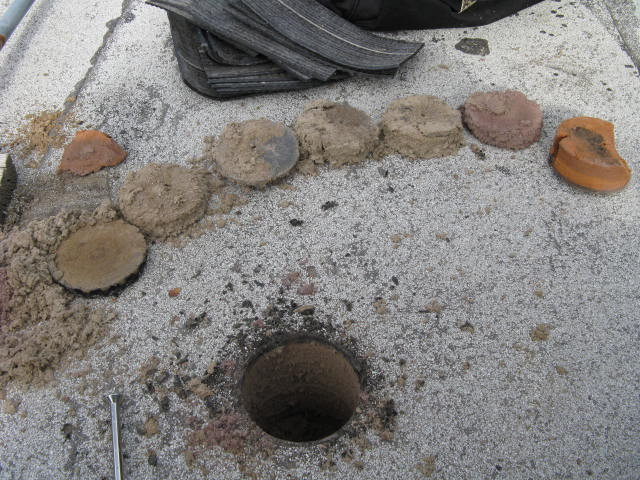
What is a Core Sample?
A core sample is when a commercial roofing inspector drills vertically down into the flat roof membrane with a special core cut tool to extract a core of all of the layers of the roof below the membrane down to the roof deck. Once the core is obtained the layers' results are documented and then the core sample is put back and the hole is repaired with a sealant.
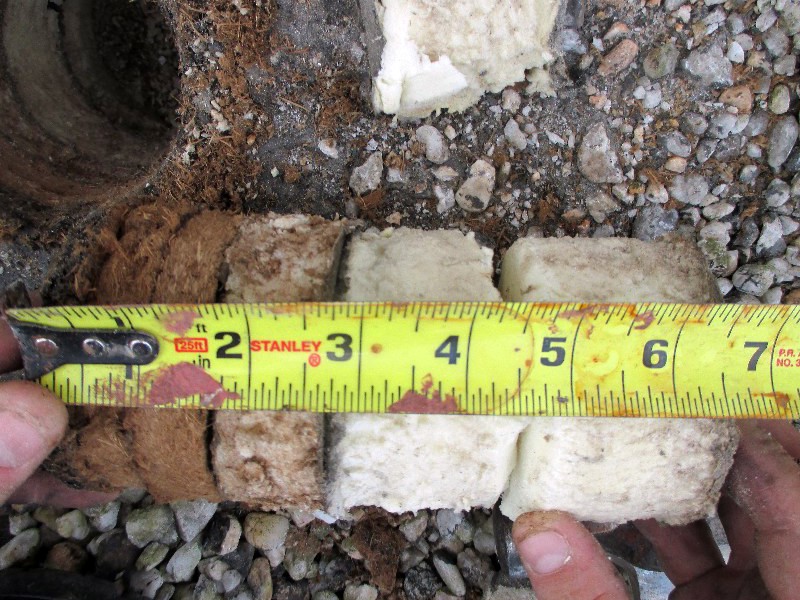
What Does a Core Sample Tell Us?
The core sample is visually inspected on the roof. But, if significant moisture is found below the roof membrane, then a sealed sample can be sent to a lab to document exactly what percentage of moisture has been found. This moisture evidence can be very crucial when an insurance claim has been filed. In addition to moisture, the core sample will tell the commercial roofing inspector the following facts:
- Layers – How many layers of roof assemblies are in place?
- Thickness – What is overall thickness of existing roof system?
- Composition – What are the layers of the existing roof system made of? What is the thickness of PolyISO insulation boards used. If ther are 2 or more roofing assembly layers, what roofing membrane was used for the first roofing assembly layer? Can that first layer stay in place?
- Moisture – Is there water / moisture trapped below the top roofing membrane?
- Roof Deck – What material is the roof deck made from? Wood, metal, concrete?
- Slope – Is there structural slope built into the roof deck, or is the slope created from tapered PolyISO insulation boards?
- Hazardous Materials – Are there any hazardous materials (e.g. asbestos) in the commerical roof assembly that will require further testing?
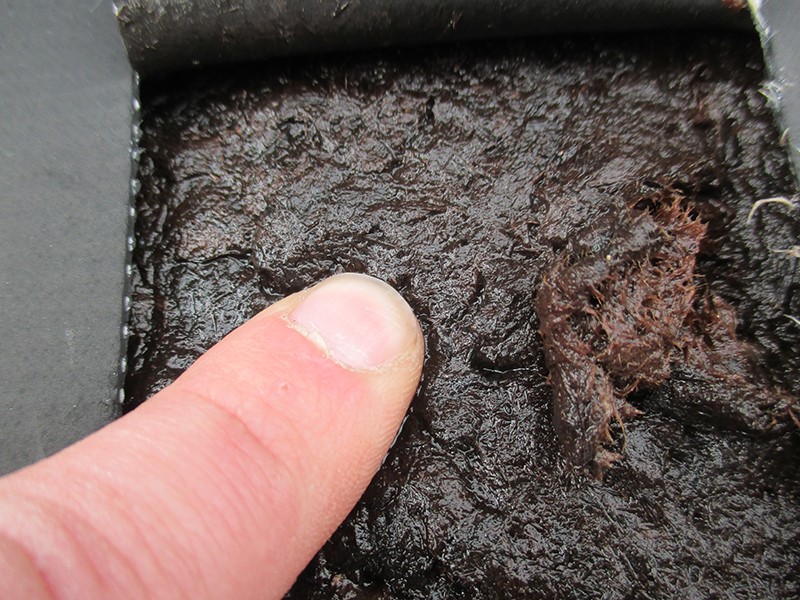
So Why Do These Core Sample Factors Matter?
These core sample factors matter as they will inform the Building Owner and Commercial Roofing Contractor what the current state of the existing roof system is, so that they can make an informed decision on what actions (if any) should be taken. Should the roof be repaired, restored, or completely replaced? Below are some of the factors that will affect this decision:
- Building Code – Core samples are the only way to determine how many roof layers there are. Typically, commercial buildings with 2 or more roof layers are required to have complete removal down to the roof deck per building code.
- Slope – Most flat roof membrane manufacturers and most building codes require positive drainage for the commercial roof system. Positive drainage can only be achieved by usinga tapered PolyISO insulation board system and/or structural slope built into the roof deck assembly.
- Fastener Length – Fasteners used in a commercial roof assembly have to penetrate the roof deck by a specific measurement per manufacturer's specifications. Consequently, it is critical to determine the overall depth of the current roof assemblies in order to select the correct fastener screw length.
- Insulation R-Value Required – Core samples will show the overall R-Value of the current roof system. In some situations, the commercial building Owner may be required to upgrade the R-Value to meet building code.
- Deck Type – Typically the roof deck can be determined by through interior underdeck inspection. However, there are times when the seeing the underdeck is impossible, such as a permanent interior ceilding. It is critical to know the roof deck type as it affects the what method of roof attachment is to be chosen. Without knowing this critical roof deck factor, it is impossible to design the correct roof system.
- Slope – Is there structural slope built into the roof deck, or is the slope created from tapered PolyISO insulation boards?
- Hazardous Material Disposal – Are there any hazardous materials (e.g. asbestos) in the commerical roof assembly that will impact the removal and disposal process? Abestos removal can be quite expensive. This cost will have to be considered when pricing a commercial roof replacement.
Commercial Roof Inspection Report

It is important to stay informed about potential commercial roof problems so you can minimize future repair costs and increase the life expectancy of your roof system. The cost of weather-related roof emergencies is significant. Early roof problem detection reduces both stress and hassle, as well as the expense spent on commercial roof repairs or commercial roof replacements when bad storms strike. Moreover, the findings from a commercial roof inspection report will allow you to budget for future commercial roof expenses and an eventual commercial roof replacement.
After all of the commercial inspection steps listed in this article are completed, the commercial roof inspector will provide you with a detailed low slope roof inspection report (sometimes referred to as commerical roof survey). The report will provide the commercial building owner with a comprehensive evaluation of the low slope roof system, extensive photos of the roof, moisture meter findings report, infrared / thermal images of the roof and moisture mapping, and what next step actions are recommended.
Recommended actions to take may include repairing the commercial roof, restoring all (or part) of the commercial roof, or completely replacing the commercial roof system. You will want to consult with a reputable commercial roofing contractor to identify the potential roof solutions that will solve all existing roof deficiencies in the most economic way. A full commercial roof replacement is the costliest option and should only be recommended when the commercial roof is beyond repair or restoration. But, what roof factors determine when I shoud repair, restore, or replace? Please read the criteria below when making a decison:
Commercial Roof Repair, Roof Restore, or Roof Replace Decison Making Factors
- Repair – If your commercial roof inspection reveals that the majority of the roof is not saturated with moisture and there are only a few weak areas, minor roof repairs will be recommended. At GoTech Roofing we will always try to prolong the life of your existing commercial roof by performing roof repairs as a first option.
- Restore – If less than 25% of the commercial roof is saturated and the remainder of the commercial roof is nearing the end of its life, a commercial roof restoration will be the next option. Commercial roof restorations (for example silicone coating), can extend your existing commercial roof’s life by 10+ years and cost a fraction of a complete roof replacement.
- Replace – Your roof may need to be replaced if the commercial roof inspection reveals more than 25% of the roof is saturated with moisture and there are multiple leaking areas on the roof’s surface. There comes a time in every commercial roof’s life when the roof is just too old and deteriorated, and attempting to repair it will be expensive. At this point, the roof repairs will typically only prolong full roof replacement for another 1-2 years. If the commercial roof is at this stage, it will be more cost effective to remove and replace the entire roof.
How Much Does It Cost to Have Your Commercial Roof Inspected?
Depending on several factors Commercial Roof Inspection prices vary, such as how complex the roof system is, the size of the roof, and how much damage it has. The average cost of a commercial roof inspection is typically between $350 and $1,000. A reputable commercial roofing contractor will be able to provide you with a more precise quotation based on your unique roofing specifications.

What Is The Cost If You Do Not Get Your Commercial Roof Inspected?
Commercial roofs are constantly under attack by UV radiation from the Sun, the endless cycle of being wet from weather and then drying out with heat, building structural movement, and other stresses. Normal aging will indeed occur on all commercial roofs. But, small roof problems stemming from neglect can result in costly repairs or worse, premature failure of the commercial roofing system. As you can see in the graph above, the cost for regular maintenance versus the cost for neglect is much cheaper over a 30-year span. A regularly scheduled program of both commercial roof inspections and roof maintenance will detect minor low slope roof problems before they become serious. This will, in turn, avoid costly tenant interruptions within the commercial building, and most importantly, protect the building Owner’s investment by adding years to the life of the roof.

